
На сайте используются cookie файлы
The site uses cookie files
Данный сайт имеет возрастное ограничение!
This site has age restrictions!
Я подтверждаю, что мне, увы, уже давно исполнилось 18 лет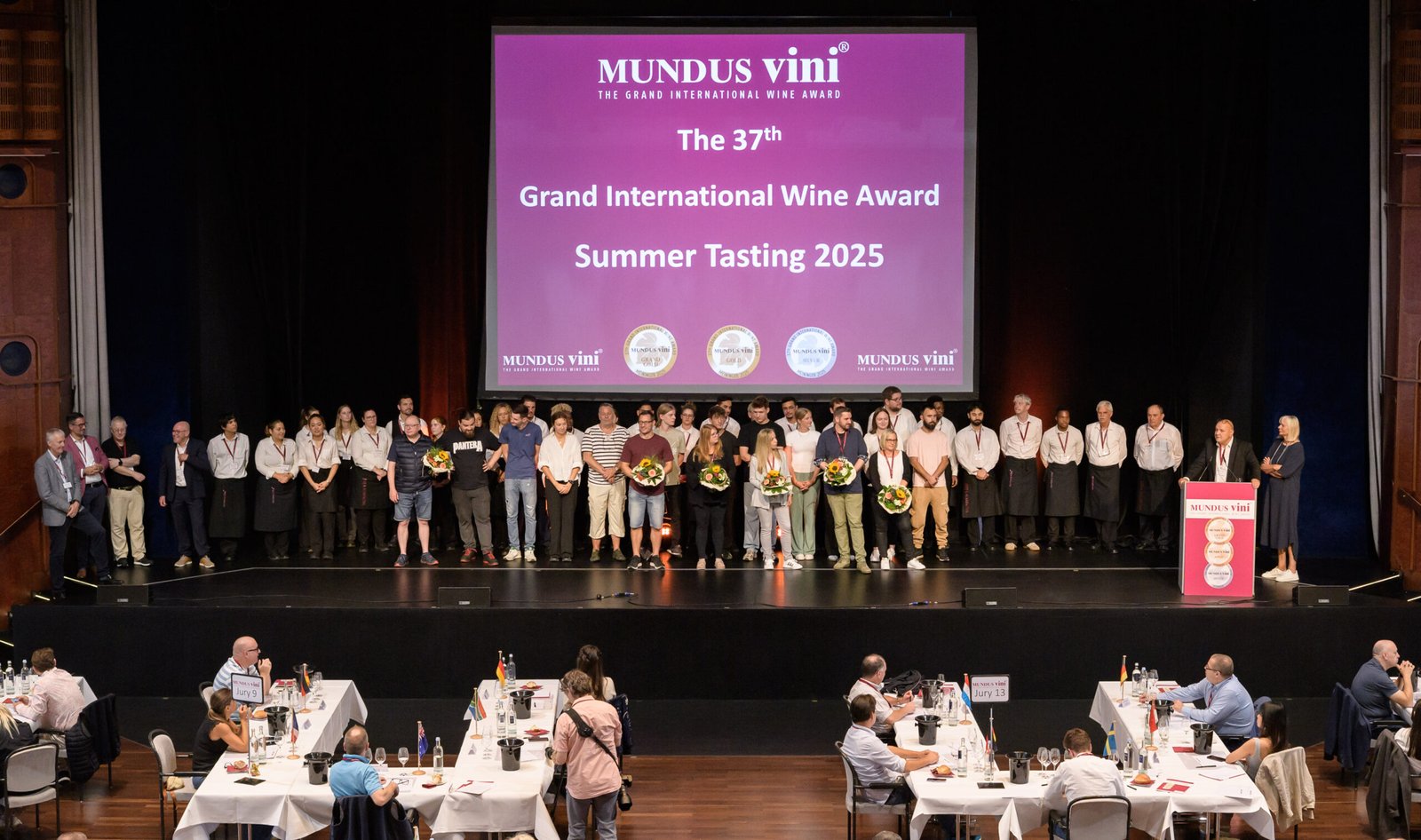
Every competition has its own rhythm. At Mundus Vini this summer, ours began not with a glass in hand, but with a gift: a tiny Elwetritsch. A mythical creature of the Palatinate, half-bird, half-fantasy, always playful and impossible to catch. The perfect symbol, I thought, for what we do as tasters – chasing the elusive, the surprising, the not-yet-familiar.
The days quickly found their tempo: long tables, a row of glasses lined like soldiers, and yet behind each one – a different world. Across my flights, the spectrum stretched wide: the shy perfume of Hárslevelű, the floral excess of Muscat, the crisp edge of Šarba, the gentle sweetness of Scheurebe. Then came the Balkan voices – Melnik from Bulgaria, Trnak from Croatia, Vranac and Kratošija from North Macedonia. Wines that rarely headline international stages, but here they suddenly stood under the same spotlight as Chianti Classico.
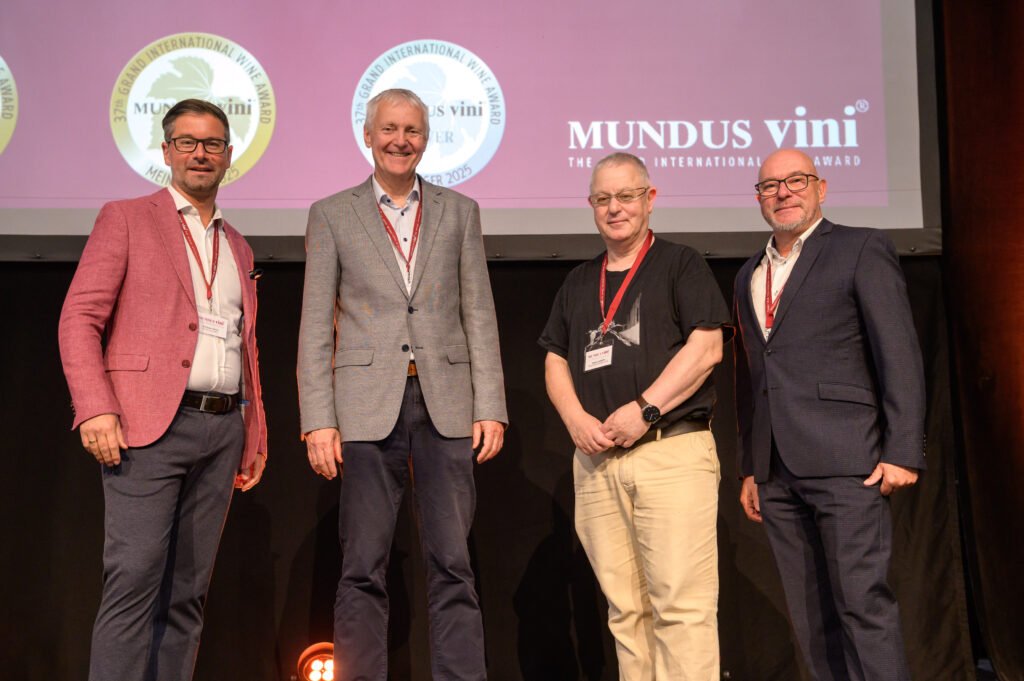
That is perhaps the quiet magic of such gatherings: a chance for less celebrated varieties to step forward, to be heard beyond their borders. You never know which glass will turn the room silent, which sip will make the jury lean in, curious, alert. Sometimes, it is not the famous names that make you pause; it is the outsiders – the grapes you have barely written about, the labels you have never seen before.
And the jury itself is its own mosaic. In my panel alone: a Slovenian enologist, a Polish editor, an Italian buyer – each with different instincts, vocabulary, and expectations of what “quality” should mean. Agreement is never automatic; it is built, discussed, and sometimes argued. And that is the beauty: tasting becomes not just judgment, but dialogue, a weaving of perspectives into something more substantial than a single opinion.

Beyond medals and scores, competitions are rehearsals of trust. Winemakers entrust us with their work, risks, and hopes in liquid form. We, in return, lend our palate, our attention, and our attempt to listen fairly. The Elwetritsche, of course, remains uncaught – but perhaps that is the point. In competitions like these, no one is chasing medals alone. We are chasing stories, origins, and the possibility that an unknown grape from a small hillside might suddenly feel universal.
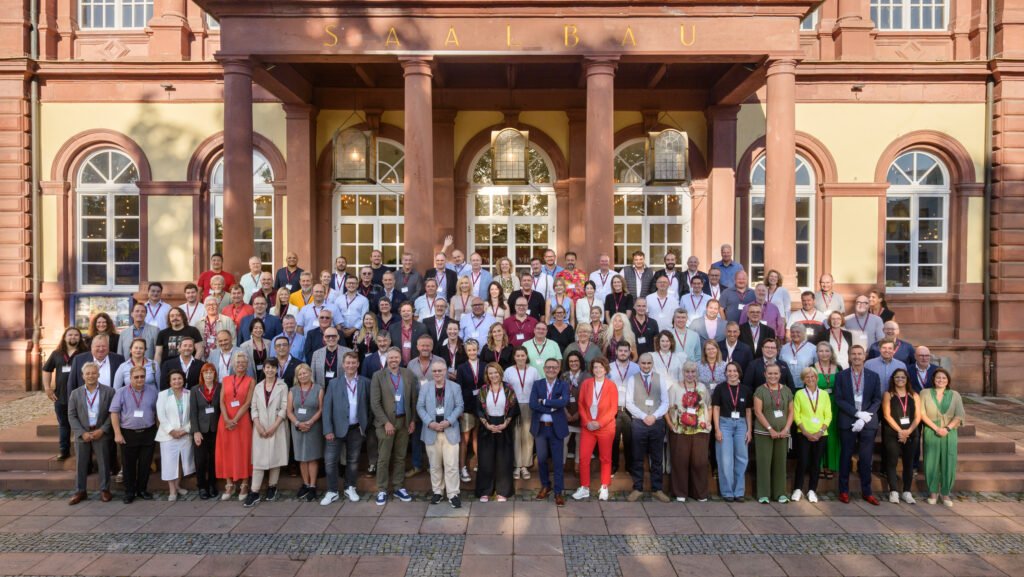
Burgenland: A Journey into Austria’s Eastern Treasure
There is a special kind of magic at Mundus Vini. Beyond the blind tastings, points, and medals, it is about those rare moments when you step outside the judging room and suddenly find yourself immersed in a wine region – not on paper, but through people, bottles, and stories. This time, it was Burgenland, Austria’s eastern jewel, unfolding its many faces.

Framed by Lake Neusiedl and the Pannonian Plain, Burgenland is a land where the sun shines generously, breezes temper the heat, and Blaufränkisch, Zweigelt, Grüner Veltliner, Riesling, Weissburgunder, and Chardonnay each tell their own stories.
The variety of wines at the Burgenland evening at the Winzergarten restaurant in Großkarlbach felt like a dialogue between generations.
Bayer-Erbhof showed what happens when curiosity meets heritage: experimentation with roots firmly planted in Burgenland soil.
Where Bayer whispers, Giefing performs. Their labels, painted with bold, artistic imagery, are as expressive as the wines.
These wines had something of the “Super Tuscan spirit” – but with unmistakably Austrian soul.
In Rust, time flows differently. It is the cradle of the legendary Ruster Ausbruch, and the Schandl family embodies that heritage with quiet confidence.
Peter Schandl poured a glass of rosé: bright, delicate, unpretentious. It wasn’t a wine that shouted; it was a wine that trusted you to listen. That is the strength of Schandl – elegance rooted in history.
At Weingut MAD’s table, the atmosphere shifted to focus and gravity. Their Leithaberg DAC Blaufränkisch was like a professor in a finely tailored suit: precise, structured, demanding attention. A wine that doesn’t seek to entertain but to teach, to show terroir in its purest, most disciplined form.
The Icons
Among the names of Burgenland present were some of Austria’s brightest stars:
The Essence of Burgenland at Mundus Vini
To walk through these tastings was to experience a microcosm of Burgenland itself:
Burgenland is not one voice but a choir – sometimes harmonious, sometimes contrasting, always authentic. At Mundus Vini, this diversity came alive not as a theoretical map, but as glasses in hand, conversations across tables, and stories shared between sips.
Loire Valley: Hidden Treasures of Cabernet Franc
If Burgenland is Austria’s sun-drenched east, then the Loire is France’s flowing soul – free, wild, and endlessly diverse. The river is not only a geographic axis but a lifeline: it shapes the soils, the people, and the wines. To sit at a Loire masterclass during Mundus Vini felt less like a lecture and more like embarking on a river journey, where each bend revealed another face of Cabernet Franc.
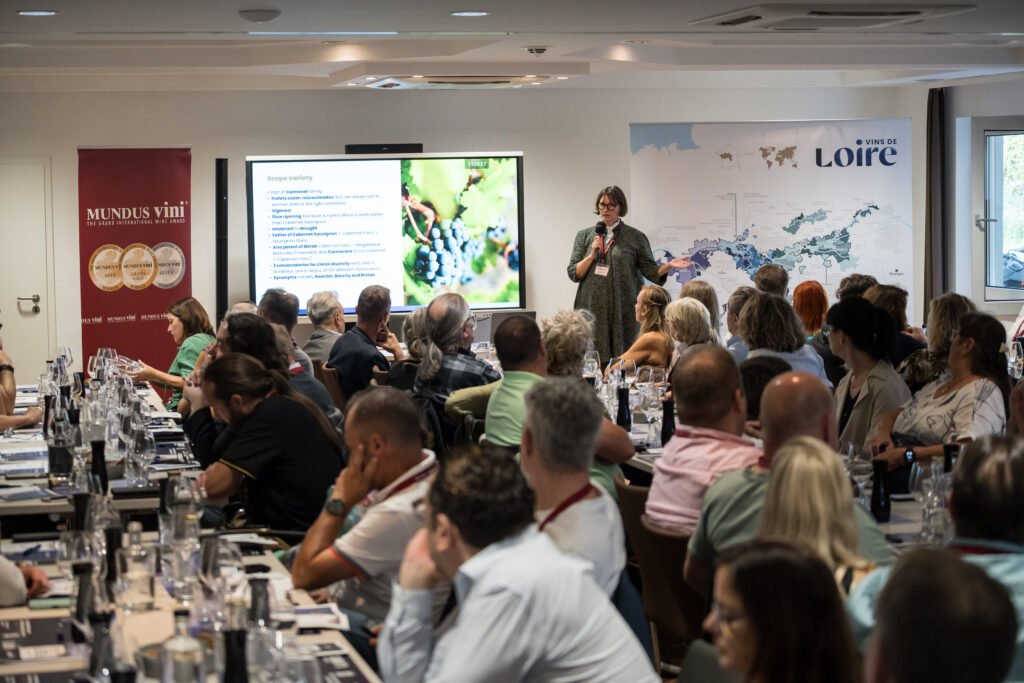
Birte Jantzen, DipWSET, wine journalist and critic, guided the session with precision and warmth, showing how this grape can shift effortlessly from light and floral to deep and structured – always with a whisper of freshness that only the Loire can give.
Wine 1 – Maison Ackerman, Les Sables – Château La Varière (Anjou, 2023)
Wine 2 – Dumnacus Vigneron, Origines (Chinon, 2023)
Wine 3 – Frédéric Mabileau (Saint-Nicolas-de-Bourgueil, 2021)
Wine 4 – Château Fouquet (Saumur, 2021)
Wine 5 – Famille Cognard (Saint-Nicolas-de-Bourgueil, 2020)
Wine 6 – Domaine Olga Raffault, Les Picasses (Chinon, 2020)
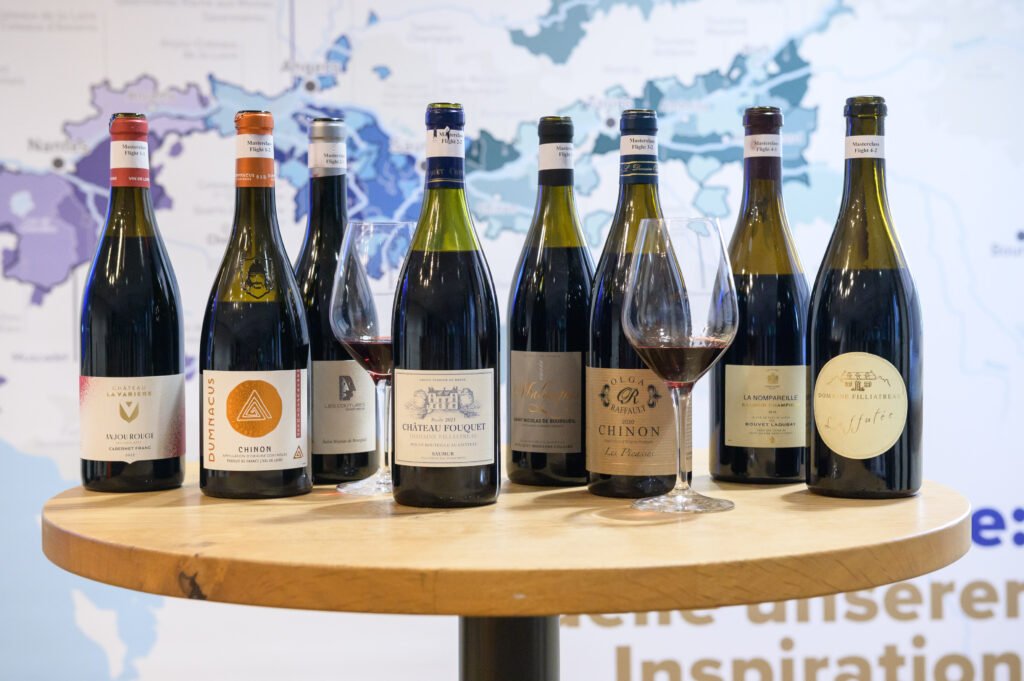
The Loire’s Voice at Mundus Vini
Through this flight, the Loire revealed not just wines, but philosophies:
Together, they proved why the Loire is both a wellspring and a bridge – connecting terroirs, histories, and styles into a mosaic that never stops evolving.
Iryna Diachenkova, co-founder of Drinks+ Media Group and Wine Travel Awards:
Three days at the end of August in the heart of the Palatinate became a kaleidoscope of vivid impressions – impressions from wines and interactions with colleagues, impressions from new knowledge. And even if it sounds a little emotional and sentimental, what a pleasure it is to taste the best wines of the world alongside top experts from different spheres: trade professionals who know consumer tastes like no one else, oenologists and sales managers, journalists, sommeliers, and representatives of wine institutions. Over the past two years, the organizers have significantly refreshed the tasters community, keeping the backbone while adding “new blood.” The tasting panels work like truly unified organisms. And although wine is an inherently subjective product, in our team, which included representatives from Germany, Austria, Poland, Morocco, and Ukraine, we almost always aligned in our assessments, sometimes coinciding exactly in the points awarded. It was a real pleasure to work in such an atmosphere, under a highly qualified chairman, Christian Zechmeister, head of Wein Burgenland. At the heart of such a positive experience, of course, was the very high overall level of the wines in the competition.
The crowning glory of our committee’s tastings were the final two flights, where every wine earned recognition. Among eight Tempranillos from Rioja (vintages 2016-2022), seven received Gold and one was awarded Double Gold. The flight of eight Australian Cabernet Sauvignons (2021-2023) was just slightly behind the Spanish line-up: six Golds and two Silvers. Simply superb wines all around!
The real challenge lies in the competition for Silver medals: among wines scoring 85-89 points, those closer to the lower end are usually eliminated – the so-called 40% rule applies. As a result, several Ukrainian samples with scores of 86+ points, unfortunately, did not receive a medal, although their creators earned a worthy evaluation for their work. After all, participating in a competition of this caliber provides an opportunity to test a product, verify whether the producer is on the right track, and, of course, send a signal to consumers by winning awards.
That is why prestigious wines such as Barolo, Amarone, and wines from Napa Valley, Champagne, and Burgundy are regular participants. That is why Ukrainian company SHABO, which has collected hundreds of awards worldwide, is among the winners of the Mundus Vini Summer Tasting 2025, receiving four Gold and one Silver medal for its 2023 vintage wines.
Mundus Vini has a well-established tradition of tastings held outside the official evaluation sessions and program. No points are awarded here – the focus is purely on emotions and experience. For these informal tastings, jury members often bring wines from their own countries, and sometimes even their own productions. This time, Drinks+ did not come empty-handed, bringing Suholimansky 2024 My Wine by Eduard Gorodetsky and Alibernet Reserve 2022 from GIGI Winery. Both wines were met with great interest and a very positive reception.
Suholimansky, with its new stylish label, impressed with a fresh, lively character, a magnificent aroma featuring floral and citrus notes, and a balanced, fruity taste. Only the pronunciation of the variety caused some initial difficulties, but real professionals handled it easily, but real professionals handled it easily. Interestingly, one of the permanent Mundus Vini judges, Davide Bortone, editor-in-chief of winemag.it, had visited Eduard Gorodetsky in Ukraine just last year.
Alibernet, or Odesa Black, is much easier for foreigners to pronounce and remember. I am sure that the sample from GIGI Winery also stayed in the memory of colleagues – their feedback was so positive. Personally, I was very impressed with the style: the winemaker managed to highlight all the best characteristics of Odesa Black. The wine showed fruitiness, velvety fine tannins, excellent structure, and a rich taste without heaviness. It is a wine you want to drink right now, yet it clearly promises to become even more elegant with time. And if this wine had been presented at the competition, it would undoubtedly have received gold.
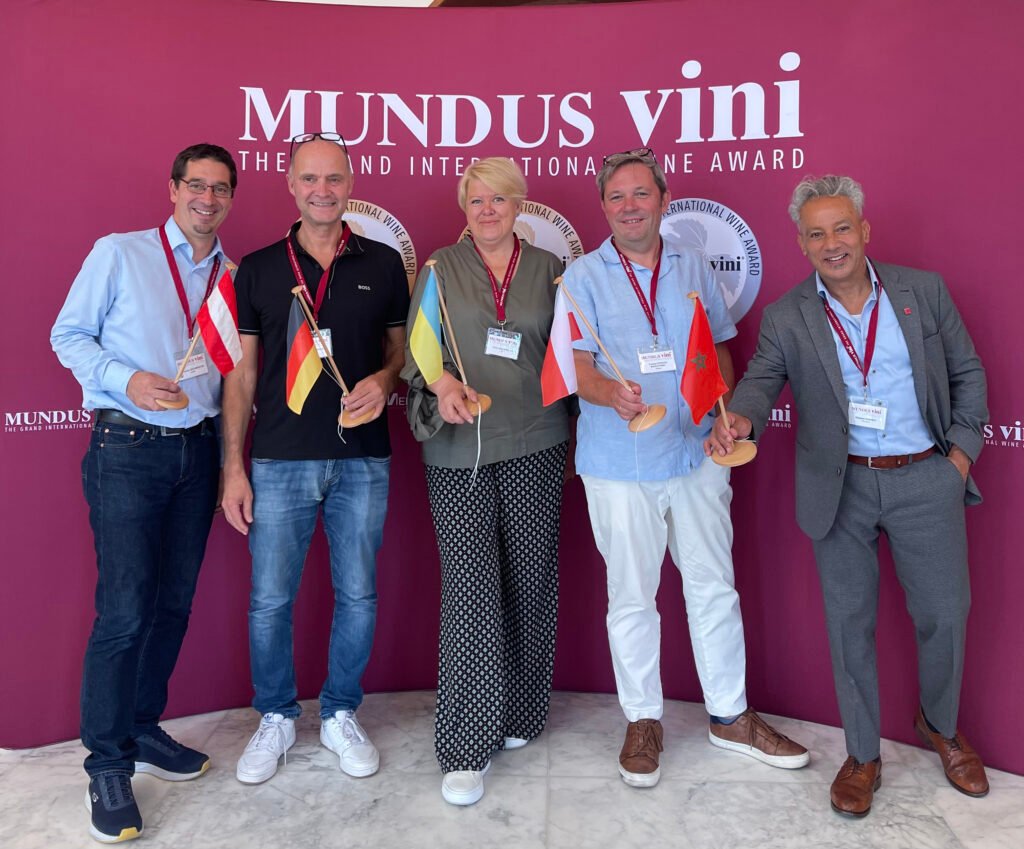
Mundus Vini is a competition with a unique charm, creating the perfect atmosphere for tasters to work and professionally evaluate wines. It is trusted worldwide, and its awards carry undeniable authority and influence. The results of the summer session can be found here.
⇒ Join our social networks ⇒ Optimistic D+ editors will take this as a compliment.
⇒ Every like is taken as a toast!
Photos: Drinks+, AD LUMINA